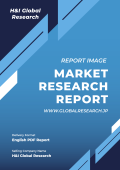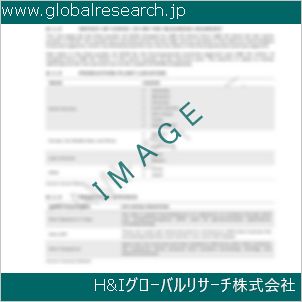1 Report Overview
1.1 Study Scope
1.2 Market Analysis by Type
1.2.1 Global Allergy Diagnostics Market Size Growth Rate by Type: 2018 VS 2022 VS 2029
1.2.2 Consumables
1.2.3 Instrument
1.2.4 Services
1.3 Market by Application
1.3.1 Global Allergy Diagnostics Market Growth by Application: 2018 VS 2022 VS 2029
1.3.2 Inhaled Allergens
1.3.3 Food Allergens
1.3.4 Drug Allergens
1.3.5 Other Allergens
1.4 Study Objectives
1.5 Years Considered
1.6 Years Considered
2 Global Growth Trends
2.1 Global Allergy Diagnostics Market Perspective (2018-2029)
2.2 Allergy Diagnostics Growth Trends by Region
2.2.1 Global Allergy Diagnostics Market Size by Region: 2018 VS 2022 VS 2029
2.2.2 Allergy Diagnostics Historic Market Size by Region (2018-2023)
2.2.3 Allergy Diagnostics Forecasted Market Size by Region (2024-2029)
2.3 Allergy Diagnostics Market Dynamics
2.3.1 Allergy Diagnostics Industry Trends
2.3.2 Allergy Diagnostics Market Drivers
2.3.3 Allergy Diagnostics Market Challenges
2.3.4 Allergy Diagnostics Market Restraints
3 Competition Landscape by Key Players
3.1 Global Top Allergy Diagnostics Players by Revenue
3.1.1 Global Top Allergy Diagnostics Players by Revenue (2018-2023)
3.1.2 Global Allergy Diagnostics Revenue Market Share by Players (2018-2023)
3.2 Global Allergy Diagnostics Market Share by Company Type (Tier 1, Tier 2, and Tier 3)
3.3 Players Covered: Ranking by Allergy Diagnostics Revenue
3.4 Global Allergy Diagnostics Market Concentration Ratio
3.4.1 Global Allergy Diagnostics Market Concentration Ratio (CR5 and HHI)
3.4.2 Global Top 10 and Top 5 Companies by Allergy Diagnostics Revenue in 2022
3.5 Allergy Diagnostics Key Players Head office and Area Served
3.6 Key Players Allergy Diagnostics Product Solution and Service
3.7 Date of Enter into Allergy Diagnostics Market
3.8 Mergers & Acquisitions, Expansion Plans
4 Allergy Diagnostics Breakdown Data by Type
4.1 Global Allergy Diagnostics Historic Market Size by Type (2018-2023)
4.2 Global Allergy Diagnostics Forecasted Market Size by Type (2024-2029)
5 Allergy Diagnostics Breakdown Data by Application
5.1 Global Allergy Diagnostics Historic Market Size by Application (2018-2023)
5.2 Global Allergy Diagnostics Forecasted Market Size by Application (2024-2029)
6 North America
6.1 North America Allergy Diagnostics Market Size (2018-2029)
6.2 North America Allergy Diagnostics Market Growth Rate by Country: 2018 VS 2022 VS 2029
6.3 North America Allergy Diagnostics Market Size by Country (2018-2023)
6.4 North America Allergy Diagnostics Market Size by Country (2024-2029)
6.5 United States
6.6 Canada
7 Europe
7.1 Europe Allergy Diagnostics Market Size (2018-2029)
7.2 Europe Allergy Diagnostics Market Growth Rate by Country: 2018 VS 2022 VS 2029
7.3 Europe Allergy Diagnostics Market Size by Country (2018-2023)
7.4 Europe Allergy Diagnostics Market Size by Country (2024-2029)
7.5 Germany
7.6 France
7.7 U.K.
7.8 Italy
7.9 Russia
7.10 Nordic Countries
8 Asia-Pacific
8.1 Asia-Pacific Allergy Diagnostics Market Size (2018-2029)
8.2 Asia-Pacific Allergy Diagnostics Market Growth Rate by Region: 2018 VS 2022 VS 2029
8.3 Asia-Pacific Allergy Diagnostics Market Size by Region (2018-2023)
8.4 Asia-Pacific Allergy Diagnostics Market Size by Region (2024-2029)
8.5 China
8.6 Japan
8.7 South Korea
8.8 Southeast Asia
8.9 India
8.10 Australia
9 Latin America
9.1 Latin America Allergy Diagnostics Market Size (2018-2029)
9.2 Latin America Allergy Diagnostics Market Growth Rate by Country: 2018 VS 2022 VS 2029
9.3 Latin America Allergy Diagnostics Market Size by Country (2018-2023)
9.4 Latin America Allergy Diagnostics Market Size by Country (2024-2029)
9.5 Mexico
9.6 Brazil
10 Middle East & Africa
10.1 Middle East & Africa Allergy Diagnostics Market Size (2018-2029)
10.2 Middle East & Africa Allergy Diagnostics Market Growth Rate by Country: 2018 VS 2022 VS 2029
10.3 Middle East & Africa Allergy Diagnostics Market Size by Country (2018-2023)
10.4 Middle East & Africa Allergy Diagnostics Market Size by Country (2024-2029)
10.5 Turkey
10.6 Saudi Arabia
10.7 UAE
11 Key Players Profiles
11.1 Thermo Fisher Scientific
11.1.1 Thermo Fisher Scientific Company Detail
11.1.2 Thermo Fisher Scientific Business Overview
11.1.3 Thermo Fisher Scientific Allergy Diagnostics Introduction
11.1.4 Thermo Fisher Scientific Revenue in Allergy Diagnostics Business (2018-2023)
11.1.5 Thermo Fisher Scientific Recent Development
11.2 bioMerieux
11.2.1 bioMerieux Company Detail
11.2.2 bioMerieux Business Overview
11.2.3 bioMerieux Allergy Diagnostics Introduction
11.2.4 bioMerieux Revenue in Allergy Diagnostics Business (2018-2023)
11.2.5 bioMerieux Recent Development
11.3 Hitachi Chemical Diagnostics
11.3.1 Hitachi Chemical Diagnostics Company Detail
11.3.2 Hitachi Chemical Diagnostics Business Overview
11.3.3 Hitachi Chemical Diagnostics Allergy Diagnostics Introduction
11.3.4 Hitachi Chemical Diagnostics Revenue in Allergy Diagnostics Business (2018-2023)
11.3.5 Hitachi Chemical Diagnostics Recent Development
11.4 PerkinElmer
11.4.1 PerkinElmer Company Detail
11.4.2 PerkinElmer Business Overview
11.4.3 PerkinElmer Allergy Diagnostics Introduction
11.4.4 PerkinElmer Revenue in Allergy Diagnostics Business (2018-2023)
11.4.5 PerkinElmer Recent Development
11.5 HAL Allergy Group
11.5.1 HAL Allergy Group Company Detail
11.5.2 HAL Allergy Group Business Overview
11.5.3 HAL Allergy Group Allergy Diagnostics Introduction
11.5.4 HAL Allergy Group Revenue in Allergy Diagnostics Business (2018-2023)
11.5.5 HAL Allergy Group Recent Development
11.6 Siemens Healthineers
11.6.1 Siemens Healthineers Company Detail
11.6.2 Siemens Healthineers Business Overview
11.6.3 Siemens Healthineers Allergy Diagnostics Introduction
11.6.4 Siemens Healthineers Revenue in Allergy Diagnostics Business (2018-2023)
11.6.5 Siemens Healthineers Recent Development
11.7 Stallergenes Greer
11.7.1 Stallergenes Greer Company Detail
11.7.2 Stallergenes Greer Business Overview
11.7.3 Stallergenes Greer Allergy Diagnostics Introduction
11.7.4 Stallergenes Greer Revenue in Allergy Diagnostics Business (2018-2023)
11.7.5 Stallergenes Greer Recent Development
11.8 HOB Biotech Group
11.8.1 HOB Biotech Group Company Detail
11.8.2 HOB Biotech Group Business Overview
11.8.3 HOB Biotech Group Allergy Diagnostics Introduction
11.8.4 HOB Biotech Group Revenue in Allergy Diagnostics Business (2018-2023)
11.8.5 HOB Biotech Group Recent Development
11.9 Lincoln Diagnostics
11.9.1 Lincoln Diagnostics Company Detail
11.9.2 Lincoln Diagnostics Business Overview
11.9.3 Lincoln Diagnostics Allergy Diagnostics Introduction
11.9.4 Lincoln Diagnostics Revenue in Allergy Diagnostics Business (2018-2023)
11.9.5 Lincoln Diagnostics Recent Development
11.10 MEDIWISS Analytic
11.10.1 MEDIWISS Analytic Company Detail
11.10.2 MEDIWISS Analytic Business Overview
11.10.3 MEDIWISS Analytic Allergy Diagnostics Introduction
11.10.4 MEDIWISS Analytic Revenue in Allergy Diagnostics Business (2018-2023)
11.10.5 MEDIWISS Analytic Recent Development
11.11 Danaher
11.11.1 Danaher Company Detail
11.11.2 Danaher Business Overview
11.11.3 Danaher Allergy Diagnostics Introduction
11.11.4 Danaher Revenue in Allergy Diagnostics Business (2018-2023)
11.11.5 Danaher Recent Development
11.12 Hycor Biomedical
11.12.1 Hycor Biomedical Company Detail
11.12.2 Hycor Biomedical Business Overview
11.12.3 Hycor Biomedical Allergy Diagnostics Introduction
11.12.4 Hycor Biomedical Revenue in Allergy Diagnostics Business (2018-2023)
11.12.5 Hycor Biomedical Recent Development
12 Analyst’s Viewpoints/Conclusions
13 Appendix
13.1 Research Methodology
13.1.1 Methodology/Research Approach
13.1.2 Data Source
13.2 Disclaimer
13.3 Author Details
| ※参考情報 アレルギー診断は、アレルギー反応を引き起こす原因物質、つまりアレルゲンを特定するためのプロセスを指します。アレルギーは、免疫系が特定の物質に過剰に反応することによって引き起こされる様々な症状を伴う疾患です。アレルギー診断は、正確な治療法や対策を講じるために不可欠です。 アレルギー診断の特徴としては、まず個々のアレルギー反応が異なる点が挙げられます。ある人が特定の食物や花粉にアレルギーを示しても、別の人は全く影響を受けないことがあります。このため、患者ごとにカスタマイズされた診断・治療が求められます。また、アレルギー症状は軽度な場合もあれば、重篤な場合もあるため、早期の診断と適切な対処が重要となります。 アレルギー診断の種類は大きく分けて、皮膚テスト、血液検査、その他の診断方法に分類されます。 皮膚テストには、皮膚プリックテストや皮内テストがあります。皮膚プリックテストでは、小さな針で皮膚にアレルゲンを取り込むことで、アレルギー反応を引き起こすか調べます。これに対し、皮内テストは、より直接的にアレルゲンを皮膚の内部に注射し、反応を見る方法です。これらの方法は、迅速かつ比較的簡単に実施できるため、広く用いられています。 血液検査のひとつである特異的IgE検査も重要です。この検査では、患者の血液中に存在する特定のアレルゲンに対するIgE抗体の量を測定します。アレルゲンに対するIgE抗体が増加している場合、その物質にアレルギーがある可能性が高くなります。血液検査は、皮膚に傷をつけることなく行えるため、小さな子供や皮膚疾患を持つ患者に適しています。 その他の診断方法としては、食物負荷試験や呼吸機能検査が含まれます。食物負荷試験は、特定の食物を少量ずつ摂取させ、アレルギー反応が出るかどうかを観察する方法です。ただし、このテストは医療機関での監視下で行う必要があり、安全性が重要です。呼吸機能検査は、喘息などの呼吸器系のアレルギーに関連する診断として使われます。 アレルギー diagnosisの用途は、個人のアレルギーを特定して、その原因物質を避けるための情報を提供することです。また、診断が確立されることで、医療提供者は適切な治療法を選択することができます。治療法としては、アレルゲンを避けることが最も基本ですが、他にも抗アレルギー薬や免疫療法といった選択肢も存在します。 アレルギー診断と関連する技術には、最新の分子診断技術が含まれます。これらの技術では、特定のアレルゲンに対する反応を分子レベルで解析することができます。例えば、遺伝子解析を行うことで、特定のアレルギーのリスクを予測することが可能になりつつあります。このような技術の発展により、より早期に、またより正確にアレルギーを診断できるようになりつつあります。 最近の研究により、アレルギーの発症メカニズムや治療に効果的な方法が模索されています。その中で、腸内細菌叢の影響や環境要因など、アレルギー発症に関わる新たな要因が明らかにされてきています。これにより、より総合的なアプローチでアレルギーへの理解が深まることが期待されています。 さらに、アレルギー診断は予防医療の観点からも重要な役割を果たします。特に小児のアレルギーは、成長に伴って変化することがあり、早期に発見することが将来の健康に大きな影響を与える可能性があります。定期的な診断と適切な管理によって、アレルギー反応を抑制し、患者の生活の質を向上させることができます。 アレルギー診断は、個々人の健康状態を正確に評価し、適切な治療を提供するための重要な手段です。技術の進歩により、より迅速かつ精度の高い診断が可能となり、今後ますます多くの人々にとって有効な解決策が提供されることが期待されます。アレルギーの理解と診断が進むことで、患者の生活質を向上させるとともに、アレルギーに対する社会的な認識も高まることが望まれます。 |
❖ 免責事項 ❖
http://www.globalresearch.jp/disclaimer












